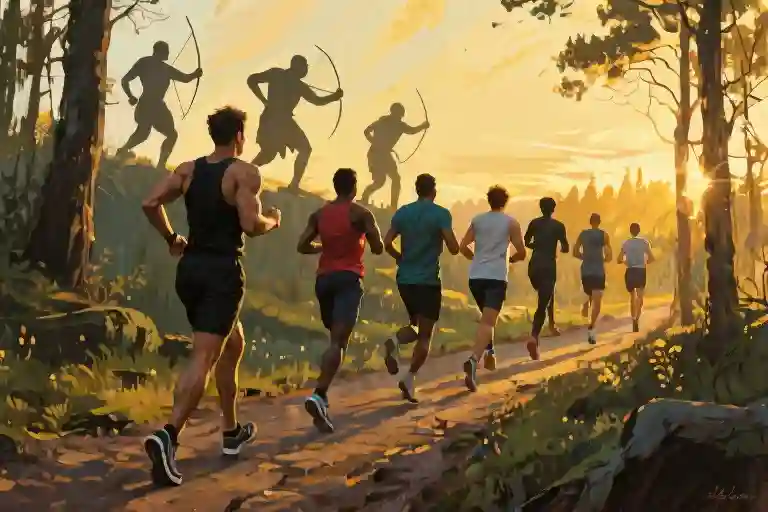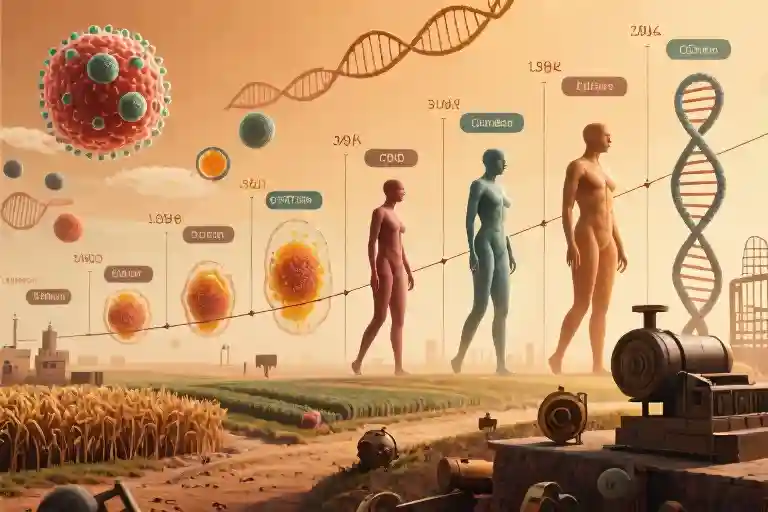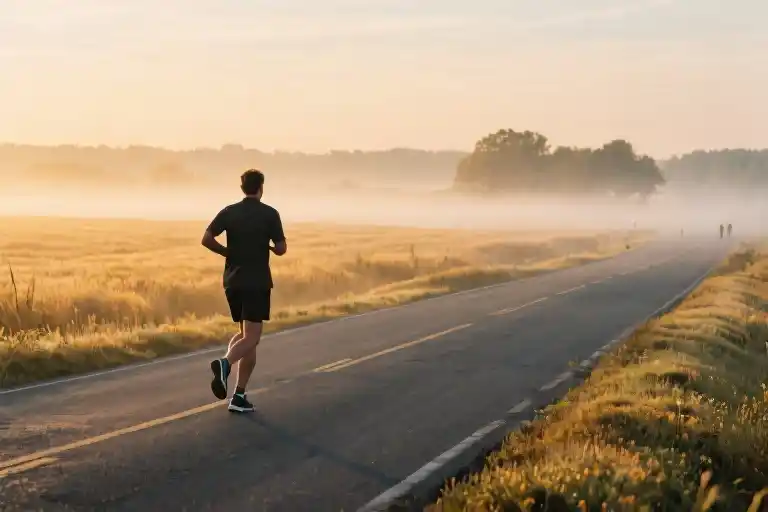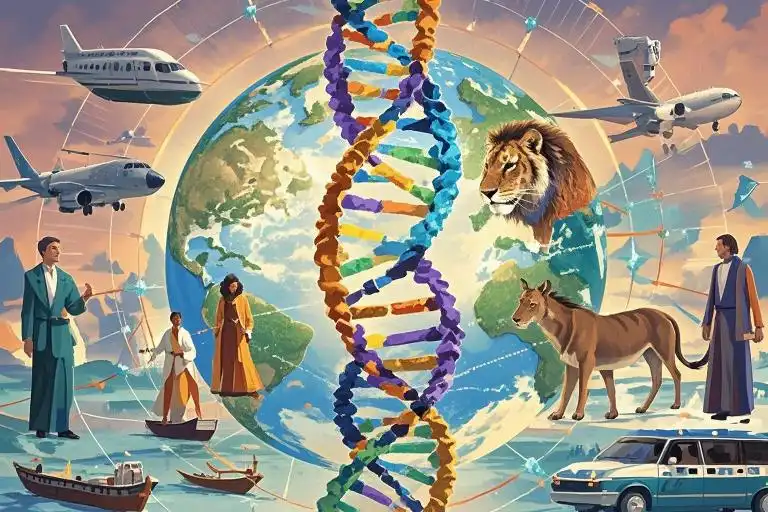The question “When was running invented?” carries a fundamental misunderstanding about human movement. Running wasn’t created at some definable moment in history – it emerged gradually through millions of years of evolutionary adaptation. Our ancestors didn’t wake up one day and decide to invent this mode of transport; rather, their bodies slowly transformed to make them nature’s first endurance athletes.
This natural ability traces back approximately 2.6 million years when early humans developed the capacity for sustained upright movement. What began as a survival mechanism – chasing prey across savannas or fleeing predators – eventually became encoded in our very anatomy. The human body contains numerous adaptations specifically for running: from the spring-like arches in our feet to the nuchal ligament that stabilizes our heads during movement.
Running’s evolutionary journey mirrors humanity’s own development. Those early survival runs through African grasslands eventually gave way to ceremonial races in ancient Greece, and later to the global phenomenon of modern marathons. The same physiological traits that allowed persistence hunting – our exceptional cooling system through sweating, energy-efficient biomechanics, and remarkable endurance – now power runners through urban jungles and along mountain trails.
This transition from survival necessity to cultural touchstone forms one of humanity’s most enduring narratives. The story of running encompasses biological adaptation, historical transformation, and contemporary meaning. It connects modern athletes pounding pavement with their barefoot ancestors chasing antelope across dry riverbeds – all part of an unbroken chain of human movement that continues evolving today.
Evolutionary Roots: How Running Shaped Humanity
The story of running begins not on a track, but in the savannas of prehistoric Africa. Our ability to run wasn’t designed in a lab or invented by some ancient coach—it emerged gradually over millions of years as one of humanity’s most fundamental survival tools. When early humans stood upright around 2.6 million years ago, they unknowingly set in motion an evolutionary chain reaction that would make us nature’s most remarkable endurance athletes.
What made human running unique wasn’t speed—plenty of animals could outpace us in short bursts. Our advantage came from something far more valuable: stamina. The persistence hunting theory suggests early humans developed the ability to run long distances to literally chase prey to exhaustion. Imagine tracking an antelope not for minutes, but for hours under the scorching sun, following blood trails and disturbed earth until the animal collapsed from heat stroke. This grueling technique, still practiced by some hunter-gatherer communities today, demonstrates how running became wired into our biology as a matter of life and death.
Scientific evidence for this evolutionary adaptation appears in our very bones. Studies of fossilized heel bones show striking changes that occurred as humans transitioned from tree-dwelling primates to upright runners. Our Achilles tendons became biological springs, storing and releasing energy with each stride. The semicircular canals in our inner ears—responsible for balance—enlarged to stabilize our heads during sustained running. Even our bare feet developed an arched structure that functions like a natural shock absorber.
Compared to other mammals, humans possess several unique running adaptations. While cheetahs can sprint at 70 mph for about 30 seconds, human runners can maintain 10-15 mph for hours—a tradeoff between explosive power and endurance that proved devastatingly effective for our ancestors. We lost most body hair to improve sweat-based cooling, grew longer legs relative to our torso, and developed the gluteus maximus (your ‘runner’s butt’) specifically to stabilize our pelvis during extended strides.
This evolutionary legacy explains why modern humans still carry what biologists call ‘the runner’s high’—a flood of endorphins that originally rewarded persistence hunting but now motivates recreational joggers. The same biomechanical advantages that helped early humans secure dinner now power marathoners across finish lines worldwide. Every time you tie your running shoes, you’re activating a 2.6-million-year-old survival program written into your muscles, bones, and nervous system—a profound connection between our athletic present and our hunter-gatherer past.
From Survival to Sport: The Birth of Competitive Running
The transition from running as a survival skill to organized sport marks one of humanity’s most fascinating cultural shifts. What began as an essential means of hunting and evasion gradually transformed into a celebration of human potential and community spirit.
Ancient Greece gave us the first recorded competitive running events during the Olympic Games of 776 BCE. These early competitions bore little resemblance to modern track meets – athletes ran naked on dirt tracks, their olive oil-coated bodies gleaming under the Mediterranean sun. The stadion race, a sprint of about 180-240 meters (the length of the stadium), became the premier event, with winners achieving celebrity status comparable to today’s sports stars.
The marathon’s origin story emerges from Greek history with the legendary run of Pheidippides in 490 BCE. According to tradition, this Athenian messenger ran approximately 25 miles from Marathon to Athens to announce victory over the Persians before collapsing and dying. While historians debate the accuracy of this account, the dramatic narrative captured imaginations and inspired the modern marathon’s creation during the first modern Olympics in 1896.
Between these ancient beginnings and contemporary competitions lies a rich history of standardization. Nineteenth-century England saw the codification of modern track and field rules, including standardized distances and the introduction of organized meets. The establishment of governing bodies like the International Association of Athletics Federations (now World Athletics) in 1912 brought global consistency to competitive running.
Three key developments shaped running’s sporting evolution:
- The amateur ideal – Early modern competitions maintained strict separation between “gentleman amateurs” and professionals, a distinction that gradually faded as running became more inclusive.
- Technological advancements – From cinder tracks to synthetic surfaces, from leather shoes to carbon-fiber plates, equipment innovations continually reshaped competitive possibilities.
- Global participation – What began as Western-dominated events now sees elite competitors from every continent, with East African distance runners particularly dominant in recent decades.
This sporting transformation didn’t erase running’s primal roots. Even today, when elite marathoners hit “the wall” at mile 20 or trail runners experience flow states, we reconnect with those ancient ancestors for whom running meant survival. The track and the trail remain places where modern humans can physically experience what our bodies evolved to do – move efficiently across long distances, testing our limits against terrain, time, and each other.
Running Today: More Than Just a Sport
The rhythmic pounding of feet against pavement has evolved far beyond its survival origins. What began as a life-or-death necessity now serves as a global language connecting millions through shared exertion and endorphin-fueled joy. Modern running culture represents an extraordinary paradox – our bodies perform this ancient movement pattern while our minds attribute entirely new meanings to each stride.
Decades of research continue to validate what our ancestors knew instinctively: running sustains human health. The American College of Sports Medicine’s landmark studies demonstrate how regular runners exhibit stronger cardiovascular systems, with resting heart rates 10-20 beats lower than sedentary individuals. Neurologists at Harvard Medical School found that consistent aerobic exercise like running stimulates BDNF production, essentially fertilizing brain cells to enhance memory and learning. These aren’t abstract benefits – they translate directly into mornings when you wake up feeling lighter, workdays when focus comes easier, and evenings when sleep arrives quicker.
Beyond measurable health metrics exists running’s intangible magic – its power to forge communities. Parkrun’s global phenomenon, with free weekly 5K events in over 20 countries, exemplifies how running erases social barriers. Corporate executives find themselves stride-matched with college students, retired teachers jog alongside young parents pushing strollers. The running track becomes society’s rare egalitarian space where pace matters more than pedigree. Major marathons now resemble moving festivals; the Tokyo Marathon’s aid stations offer everything from traditional salt plums to futuristic energy gels, while Berlin’s course winds past centuries-old landmarks and modern street art alike.
Technological advancements have reshaped running experiences without altering their fundamental appeal. Carbon-plated shoes like Nike’s Vaporfly series leverage aerospace materials to return energy with each step, yet the sensation of wind against skin remains unchanged. GPS watches provide real-time pace data, but can’t replicate the primal satisfaction of cresting a hill without slowing. Strava’s global heatmaps reveal popular routes, yet every runner still discovers their own secret trails. This delicate balance between innovation and tradition defines contemporary running culture – we embrace tools that enhance the experience while preserving its essential rawness.
Perhaps running’s greatest modern transformation lies in its democratization. Elite athletes chasing Olympic medals share Instagram feeds with first-time 5K participants. Ultra marathoners traversing mountain ranges and treadmill runners in basement gyms all identify under the same broad banner. Running clubs organize through workplaces, neighborhoods, and even dating apps, proving this ancient practice adapts seamlessly to modern social structures. The activity that once ensured our species’ survival now sustains something equally vital – human connection in an increasingly fragmented world.
Every time you tie your shoes, you’re not just exercising – you’re participating in a 2.6-million-year-old human tradition that’s continually reinventing itself. Whether chasing personal records or simple stress relief, modern runners inherit an extraordinary legacy. The trails and tracks await, ready to transform today’s steps into tomorrow’s history.
The Enduring Legacy of Running
Running carries a dual heritage in human history – an evolutionary survival tool turned global cultural phenomenon. This simple act of putting one foot in front of the other connects us directly to our ancestors who ran to live, and to the ancient Greeks who first celebrated running as sport. The same biomechanics that allowed early humans to persistence hunt now power marathoners through city streets and trail runners through mountain paths.
Modern running culture has transformed this primal movement into something far beyond physical exercise. Parkrun communities gather weekly in parks worldwide, not to hunt but to connect. Charity runners raise millions by logging miles. The solitary runner finds meditation in rhythm, while the track team finds camaraderie in shared struggle. Running shoes have replaced bare feet, but the fundamental human experience remains.
Technological advancements continue reshaping how we run – from carbon-plated shoes to GPS watches that map every stride. Yet the essential appeal remains unchanged: the wind against your face, the steady drum of footsteps, that moment when effort becomes flow. Running persists as one of the most accessible sports because it requires nothing but the body evolution perfected for this very purpose.
Where will this 2.6-million-year-old legacy take us next? Perhaps to new understandings of human potential, or simply to the next sunrise where someone laces up shoes to continue this ancient tradition. The streets and trails await – not just as exercise routes but as pathways connecting us to every human who ever ran before. Your next run isn’t just exercise; it’s participation in the oldest sport known to our species.
So when you next feel the urge to move, remember: you’re not just going for a run. You’re joining a continuum that began when the first humans stood upright and discovered the power of endurance. The baton has been passed through millennia – now it’s in your hands. Where will you take it?




